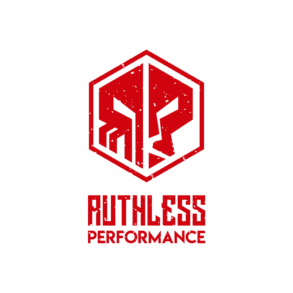In the holiday lull of the lengthy winter swim season, some of our better athletes are chipping away at their weaknesses, building to their strengths, and generally outworking the competition. While some excuse away their laziness over the holidays as a ‘break’, others view it as a chance to double-down on swimming, but very strategic coaches and athletes are using this time to get in a solid training block in at the pool and in the weight room.
Avoiding the phenomena of overtraining should be a top priority for athletes, both in-season and out. This worry however, has lead many to avoid in-season strength training as many coaches (and parents) are afraid that strength training during this time will hinder performance and lead to the dreaded state of overtraining. Not only does the research not support this claim (1), but research has indicated and, our experience at Ruthless Performance shows, that concurrent training can lead to enhanced activation of both strength and cardio-respiratory pathways while enhancing the capillary density of skeletal muscle tissue (2).
Even though I have an aversion to scholarly works as they broadly relate to the very qualitative nature of sports performance training, I’ll draw a citation from the belly of the academic beast… As defined in the 8th Edition of Exercise Physiology: Theory and Application to Fitness and Performance, overtraining is described as follows:
Overtraining: An accumulation of training stress that impairs an athlete’s ability to perform training sessions and results in long-term decrements of performance.
Exercise Physiology: Theory and Application to Fitness and Performance (8th Edition)
Since strength levels decrease as the season wears on, a swimmer’s ability to elicit force off of the block and walls will be impaired as well. This is yet another reason why advanced, stand-alone strength training during the season is so critical to peak performance.
But not only does this in-season strength cycle provide a vital training stimulus, it also helps prevent poor behaviors that can become habituated over the holiday season (weight gain, abnormalities in the circadian rhythm, etc.). Most coaches are all-too familiar with the holiday weight gain. Seasoned coaches tend to have stories (some of which can be grotesquely comical) of their most stark observations of an athlete’s transition from in-shape to out-of-shape and overweight in just a few short unsupervised weeks during the holiday break.
In our experience, there is also a bimodal distribution in the likelihood of sports injuries in swimming where the greatest density of injuries occur either:
a.) Within 1-3 weeks of the onset of the preseason: which is caused by a lack of preparedness for the rapid influx of training yardage to an athlete which has been, until this point, sedentary.
OR
b.) Within the final 1-3 weeks of the season: in this case, the decreased yardage is replaced by a taper, which lends to higher intensity bouts of training. The characteristics of injuries at this time are the cumulation of injuries sustained throughout the season but that have reached a ‘critical mass’ of injury. In the case of freestylers this is typically the tipping point from nagging shoulder pain to bursitis or cuff tears; in breaststrokers this may be manifested as knee pain turned into an MCL tear or meniscus tear.
The value of strength training during the lull of the mid-season is that it prevents the aforementioned type-b injuries that are emergent properties of excessive in-pool training with less-than-ideal stroke kinematics. This land-based training gives the athlete a chance to improve posture and arthrokinematics, enhance capillary density of skeletal muscle, flush waste products accumulated during high-yardage training cycles, and even assist athletes to avoid habituating poor behaviors.
Though this has been written primarily about swimmers, the same is true for any endurance athlete. Falling behind on strength training during the in-season is a less-than-optimal training strategy. Strength training works well in conjunction with intense bouts of cardiovascular-dominant training methods. Though more research is needed to determine if the inverse is true for strength athletes (3).
Works Cited
(1). Neuromuscular adaptations to concurrent strength and endurance training

Pingback: Internal Program Review: In-Season Strength Training for an Advanced High School Swimmer – Ruthless Performance